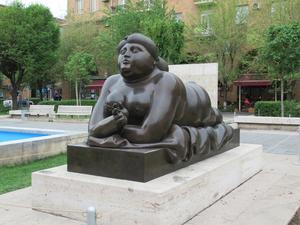 An earnest young woman, Kylie Lindorff, gazes out at us from a photo in the 2019 Annual Report of the Framework Convention Alliance (FCA). This is made up of the organisations – there are nearly 500 of them – which work on the ‘development, ratification, and implementation’ of the World Health Organization’s Framework Convention on Tobacco Control (FCTC).
An earnest young woman, Kylie Lindorff, gazes out at us from a photo in the 2019 Annual Report of the Framework Convention Alliance (FCA). This is made up of the organisations – there are nearly 500 of them – which work on the ‘development, ratification, and implementation’ of the World Health Organization’s Framework Convention on Tobacco Control (FCTC).
Ms Lindorff is the Board Chair of the FCA. Let’s take just one sentence of her inspiring ‘Message’:
Underpinning our successes are a growing urgency to scale up FCTC implementation as a key component of global health and to achieve momentum towards the Sustainable Development Goals.
This is hard to understand. ‘Underpinning’ is a singular noun so it should read, ‘Underpinning our successes is…’ That aside, note ‘successes’ in the plural – they’ve a lot to congratulate themselves about, it seems. Now, if there’s urgency about something it doesn’t add to the meaning to say ‘growing urgency’. And surely the urgency, whether growing or otherwise, is in the ‘implementation’ of what follows; one cannot ‘scale up’ implementation since this word means that something is completed or fulfilled. Further, the implementation, we learn, is not just any old boring component, but a key (!) component of global health, whatever that means. Next, they want to ‘achieve momentum’. It’s difficult to see how they can do this. Momentum can be initiated, gathered, sustained, or increased, but what does she mean by achieve momentum?
The main point of the Message is that it seeks to draw a parallel between the Covid-19 pandemic and smoking.
Covid-19 is a terrible natural disaster. (Or not entirely, if we look at the possible origin of the pandemic in the cruel ‘live markets’ in Wuhan or that it might have escaped from a laboratory in that city in China.) But smoking is a wholly unnatural disaster: it’s man-made. Cigarettes do not occur in nature but are produced in factories. Nonetheless, Ms Lindorff does have a point with this false analogy: if the political will were there, the smoking problem could be solved, as I’ll discuss in a moment.
In the meantime, what Ms Lindorff wants to do is to change reality, this being the tardiness that she says ‘the world’s leaders’, whoever these people are, show in implementing tobacco control measures. Nonetheless, she is pleased to remind us that ‘FCA remains at the forefront of global activity to strategically accelerate this change.’
An equally depressing assessment follows from the Executive Director, Francis Thompson, who notes that ‘governments [are] mostly failing to treat the tobacco epidemic with the seriousness it deserves,’ and reminds us that ‘the actual number of smokers has remained almost constant since the turn of the century, at 1.1 billion.’
The report goes on to say, in the precise English they use, that in 2019 FCA’s work focussed on strengthening FCTC implementation by
kickstarting a program to build the capacity of civil society organisations for budget and tobacco taxation advocacy; and by showcasing the connections between tobacco control and development issues in a campaign to garner sustainable funding in this area
and that
Large, repeated increases in taxes on tobacco products are the single most effective way to drive down tobacco consumption and the death and disease it causes.
Are they really the single most effective way? What about kickstarting a program to build the capacity of civil society organisations to advocate for tobacco abolition? Why do they only aim to drive down tobacco consumption and the consequent death and disease? And how much driving down would satisfy them? What about aspiring to eliminate the death and disease that tobacco consumption causes, by showcasing the connections between tobacco abolition in a campaign to garner sustainable funding to put pressure on the world’s leaders to abolish the manufacture and sale of tobacco products?
Of this, we hear nary a word.
Text © Gabriel Symonds
The picture shows Fernando Botero’s sculpture, Woman Smoking a Cigarette (1987), in Alexander Tamanyan Park in Yerevan, Armenia.

Leave A Comment